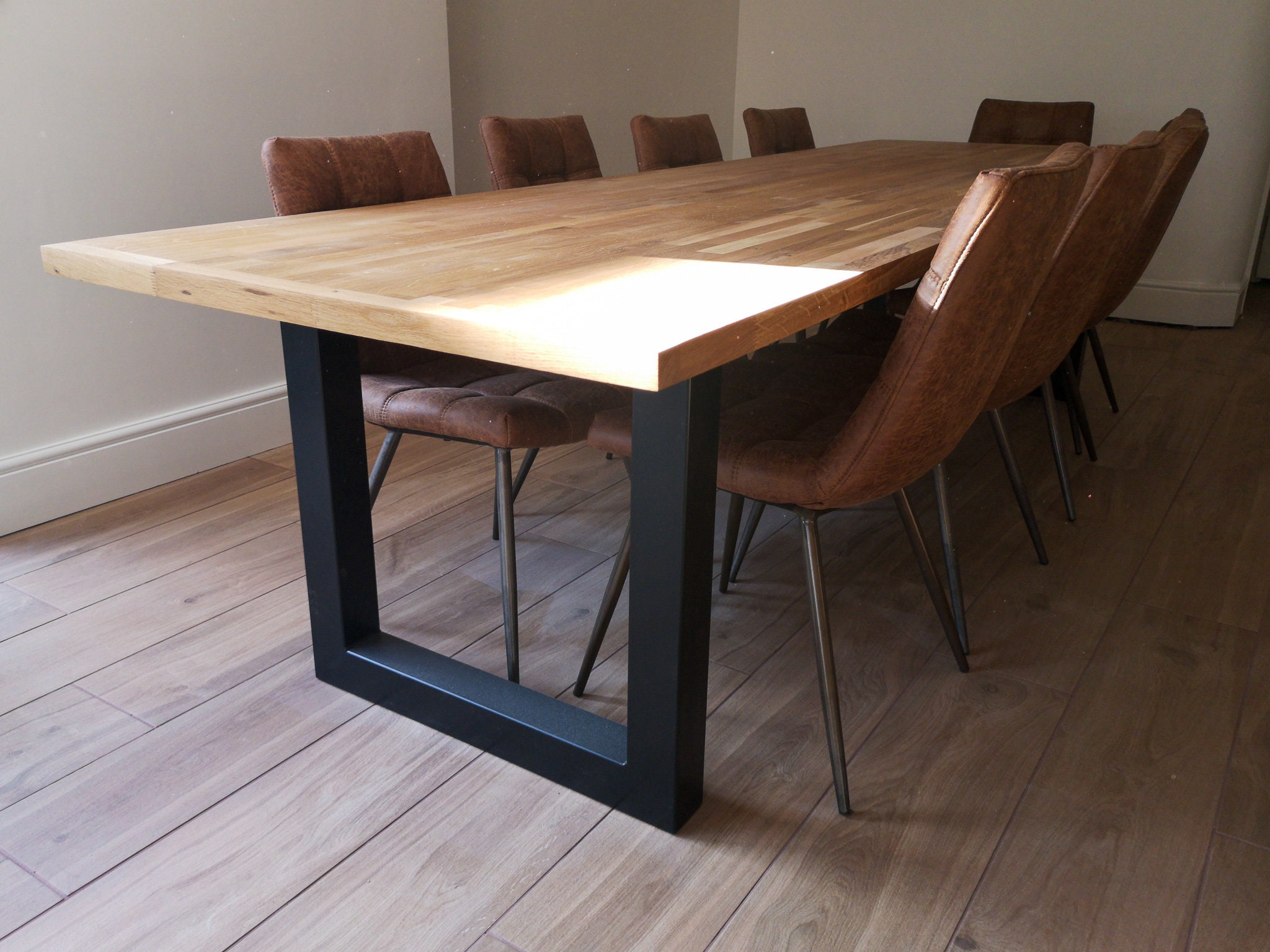Custom Dining Room Table Legs: A Stylish Addition to Any Kind Of Home
Custom Dining Room Table Legs: A Stylish Addition to Any Kind Of Home
Blog Article
A Thorough Consider Eating Table Leg Styles: Finding the Suitable Suit
Selecting the right eating table leg design is vital for both visual allure and sensible functionality. Conventional four legs supply timeless beauty and security, while the stand base gives raised legroom and a contemporary appearance. For those with bigger tables, trestle legs make certain strong assistance, whereas hairpin legs introduce a mid-century modern vibe with their minimalist layout. The x-shaped legs mix modern design with enhanced stability. Each of these alternatives brings distinct benefits, making the choice greater than simply a matter of choice. Explore additionally to uncover which design completely enhances your dining area and way of life.
Standard 4 Legs
Amongst the numerous kinds of eating table leg designs, the conventional four-leg design stays an ageless choice for numerous homes. 4 legs supply well balanced support, making certain the table remains steady and qualified of bearing substantial weight (dining room table legs).
From an aesthetic viewpoint, the traditional four-leg layout can be conveniently adjusted to numerous indoor designs. Whether crafted from timber, steel, or a mix of products, these legs can be elaborately carved, streamlined and minimalistic, or anything in between. Their adaptability permits them to complement both rustic and contemporary setups perfectly.
Additionally, the straightforward framework of the four-leg design facilitates ease of activity and positioning within a room. Unlike more complex bases, this design decreases blockages, giving sufficient legroom for diners. In recap, the typical four-leg table leg design marries withstanding style with sensible performance, making it a sharp selection for those seeking both kind and feature in their dining furniture.
Pedestal Base
Frequently commemorated for its sophisticated and space-efficient layout, the stand base is a notable option to the conventional four-leg configuration in table leg designs. This distinct base usually includes a solitary central column sustaining the table top, which can vary in type, from ornately carved timber to sleek, modern-day steel. One of the key benefits of the pedestal base is its ability to optimize legroom and seating adaptability. Without corner legs, diners are afforded greater freedom of movement, making it an optimal option for round and oval tables that promote even more intimate and comprehensive celebrations.
In addition, the pedestal base's central assistance can manage substantial weight, enabling making use of heavier table tops, such as marble or thick hardwood. This toughness combined with its aesthetic adaptability makes the pedestal base a preferred choice in both traditional and modern interior settings. It can perfectly incorporate with different design styles, from traditional sophistication to minimal modernity. Additionally, the main column itself provides a canvas for intricate styles and imaginative expressions, including an aspect of aesthetic rate of interest beneath the table. In summary, the pedestal base combines functionality snappy, making it a refined and practical alternative for varied dining environments.
Trestle Legs
Trestle legs give a durable and timeless foundation for eating tables, defined by their straight cross-bracing and strong support beam of lights. Originating from middle ages times, this layout has advanced yet kept its important framework, making it a perennial favorite in both traditional and modern settings. The main trestle beam, commonly supported by two or more upright messages, supplies outstanding stability, permitting bigger table sizes without the need for additional legs.
A significant benefit of trestle leg tables is the ample legroom they use. Unlike tables with four edge legs, the absence of obstructions at the table's sides provides unobstructed room for chairs and restaurants, improving convenience and accessibility. This makes trestle tables suitable for accommodating larger events, whether in a dining-room or a reception hall.
The aesthetic adaptability of trestle More hints legs is significant. Readily available in a variety of products such as wood, metal, and composite, they can be completed to enhance a wide range of indoor styles. From rustic farmhouse to streamlined modern-day styles, trestle legs can be personalized to match specific tastes. Their enduring appeal and practical benefits make trestle legs a compelling option for those seeking both style click for more info and functionality in their eating table.
Hairpin Legs

The allure of hairpin legs exists in their simpleness and flexibility - dining room table legs. Readily available in a series of materials, consisting of steel and brass, they can be ended up in various shades to enhance different interior styles. Whether coupled with a rustic wood table top or a contemporary glass surface, barrette legs easily mix functionality with a touch of vintage appeal
Sturdiness is an additional notable function of hairpin legs. In spite of their fragile look, these legs are crafted to bear significant weight, making certain the table remains stable and protected. Furthermore, they are reasonably easy to set up, making them a prominent option for do it yourself fanatics and specialist furnishings makers alike.
X-Shaped Legs

Created from materials such as steel, wood, or a mix of both, X-shaped legs can be tailored to match different style choices. Steel legs commonly lend a smooth and commercial feeling, ideal for loft-style homes and modern eating rooms. On the other hand, wooden X-shaped legs supply a warmer, much more rustic charm, ideal for farmhouse or eclectic interiors. The convenience in materials allows house owners to tailor their dining tables to better fit their general style system.
Additionally, the design behind X-shaped legs makes certain also weight circulation, minimizing the risk of wobbling and enhancing toughness. This makes them specifically fit for bigger table that call for added assistance. Basically, X-shaped legs mix sensible design with modern-day aesthetic appeals, making them an ageless option for diverse dining environments.
Conclusion
A this detailed understanding of dining table leg designs reveals the distinct attributes and benefits of each layout. Trestle legs make sure durable assistance for bigger tables, and barrette legs present a mid-century modern visual.
Report this page